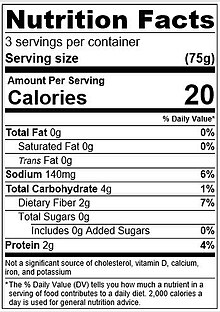ASSIGNMENT 7:



When beginning to talk about nutrient timing surrounding a workout, pre-exercise nutrition should be the first topic of discussion. Pre-exercise nutrition serves as an aid to fuel the muscles and allow them to operate at their optimal performance levels while engaging in rigorous exercise. [1]Adenosine Triphosphate (ATP) is the chemical responsible for fueling the actions of muscle contractions and is produced when macronutrients from food are broken down and processed into active (ATP) or stored (glycogen) energy.[2] These energy supplies are limited and are dependent very much on the nutritional statistics of an individual. Regulating these stores to an optimal level prior to engaging in exercise can, to some negligible degree, provide benefit to and increase the overall quality of said exercise.[3] Initial studies surrounding pre-exercise nutrition began in the early 1930s and sought to observe the effects of the ingestion of carbohydrates (CHO) in the forms of glucose and fructose. [2] Due to the well-established connection between negative body changes that come with exercise when tearing muscle, and the depletion of glycogen stores, the concept of CHO loading is likely the oldest form of all the nutrient timing practices. [3]It plays a key role in the synthesis and recovery of muscles in the body.[4]

Right alongside CHO loading for possible benefits prior to a workout comes the loading of protein and amino acids.[5] Researchers have been exploring the possible benefits of loading both these essential macronutrients alone and in combination with CHO loading to see if there are any possible benefits.[3] A study with the goal of identifying this relationship compared the loading of CHO with an amino acid blend that was consumed either immediately before, or immediately after, a bout of physical exercise at around 80% 1 RM. What they found was that the effect of the amino acid blend was greater and proved better results when taken prior to exercising. [3] They believed that the increased amino acid levels within the body tissue were distributed throughout the body better and likely led to an increase in amino acid synthesis. [3] Subsequently, the researches conducted the same type of trial but with CHO and a whey protein blend; again administering it either immediately before, or immediately after, a bout of physical exercise at 80% 1 RM. [3]For this specific case, the researchers concluded that there were no differences between the two administration times suggesting that the results for the combination of protein and CHO can be negligible. [3] Conclusions pulled from both of these studies suggest that ingestion of amino acids or protein, and CHO, before a bout of physical exercise can maximally and positively stimulate muscle synthesis upon completion of the workout. [3]
WORK IN PROGRESS
- ^ Campbell, Bill I., et al. "Nutrient timing for resistance exercise." Strength & Conditioning Journal 34.4 (2012): 2-10.
- ^ a b Arent, Shawn M.; Cintineo, Harry P.; McFadden, Bridget A.; Chandler, Alexa J.; Arent, Michelle A. (2020/7). "Nutrient Timing: A Garage Door of Opportunity?". Nutrients. 12 (7): 1948. doi:10.3390/nu12071948.
{{cite journal}}: Check date values in:|date=(help)CS1 maint: unflagged free DOI (link) - ^ a b c d e f g h Kerksick, Chad; Harvey, Travis; Stout, Jeff; Campbell, Bill; Wilborn, Colin; Kreider, Richard; Kalman, Doug; Ziegenfuss, Tim; Lopez, Hector; Landis, Jamie; Ivy, John L. (2008-10-03). "International Society of Sports Nutrition position stand: Nutrient timing". Journal of the International Society of Sports Nutrition. 5 (1): 17. doi:10.1186/1550-2783-5-17. ISSN 1550-2783.
{{cite journal}}: CS1 maint: unflagged free DOI (link) - ^ Munteanu, Anca Magdalena, et al. "Nutrition timing in top athletes." Sports Medicine Journal/Medicina Sportivâ 10.3 (2014).
- ^ Ivy, John, and Robert Portman. Nutrient timing: The future of sports nutrition. Basic Health Publications, Inc., 2004.